There are a few parallels to Periyar's role in the Vaikom Satyagraha, breaking language and cultural barriers.
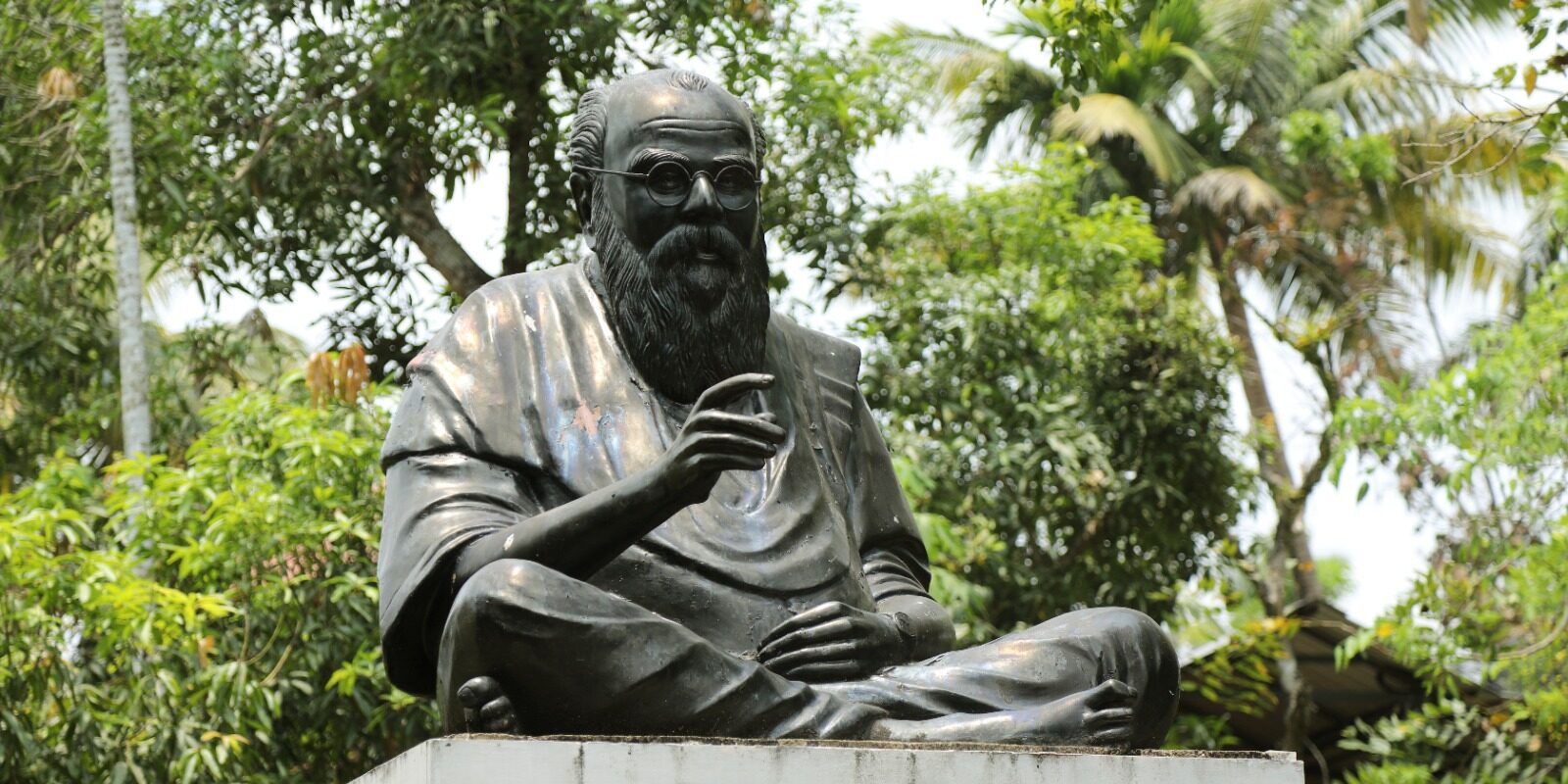
Thanthai Periyar Statue in Vaikkom. Photo: Shafeeq Thamarassery.
Part of a special series on the Vaikom Satyagraha. It was on 30 March, 1924, that an agitation began centered around the Shiva temple in the central Kerala town of Vaikom in the then princely state of Travancore. The temple not only did not allow the lower castes in, it also forbid them from using the roads around it. The largely non-violent agitation marked the beginning of temple entry movements across India.
In shambles for a long time, the Thanthai Periyar Memorial in central Kerala’s Vaikom town was spruced up a week ahead of the visit of Tamil Nadu Chief Minister MK Stalin as a special guest at an event on 1 April to mark the centenary of the historic Vaikom Satyagraha.
Established at the behest of then Tamil Nadu chief minister MG Ramachandran, the memorial comprises a life-size statue of the legendary proponent of Dravidian ideology, and a library displaying numerous black-and-white photos of his illustrious life as a fighter and social reformer.
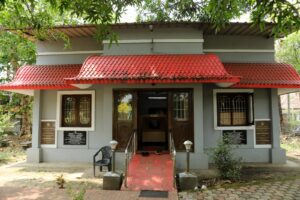
The Periyar memorial library in the central Kerala town of Vaikom. (Shafeeq Thamarassery)
Despite the neglect of his memorial — though the local municipality did make attempts to improve matters — the Vaikom chapter of Periyar’s life remains a shining example of cross-cultural ties while espousing the causes of equality and social justice.
At the 1 April event, Stalin announced ₹8.16 crore for memorials to the Dravidian leader in Kerala. Apart from renovating the memorial in Vaikom, another is being planned at Arookkutti near Kochi, where Periyar was jailed for the first time.
At that jail, Periyar — who travelled from his native Erode to Vaikom to lead the agitation on receiving telegrams from local Congress friends — was treated as an ordinary prisoner, taken there in handcuffs, with shackles around his legs and neck.
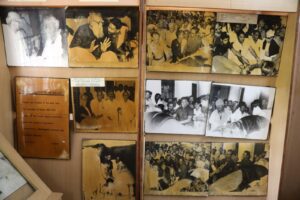
Inside the Periyar memorial in Vaikom in central Kerala. (Shafeeq Thamarassery)
That was despite interventions by Congress leaders like KP Kesava Menon and C Rajagopalachari to convince the king of the then princely state of Travancore that Periyar was a towering champion of social reforms in Tamil Nadu.
Among the leaders of Vaikom Satyagraha, he was the only person to be awarded four months of rigorous imprisonment.
Documents at the Thanthai Periyar Memorial at Vaikom reveal that Periyar was engaged in Congress party activities near Madurai early in April 1924 when he received repeated telegrams from leaders of the Vaikom Satyagraha, urging him to reach the central Kerala town and take over the agitation.
The first telegram was from freedom fighter Kurur Neelakandan Namboodiripad, and it reached him on 4 April. Two days later, he received another telegram, this time from Barrister George Thomas, a friend hailing from Kerala and active in the Madurai region as an eminent lawyer and emerging Congress leader.
Namboodiripad sent a second telegram informing Periyar that all the leaders of the satyagraha, including KP Kesava Menon, George Thomas, K Kelappan, TK Madhavan, and K Ayyappan, had been arrested, and there was a vacuum in the leadership of the agitation.
He requested Periyar to reach Vaikom at the earliest.
Periyar returned to Erode and told his wife Nagammal to accompany him. Together they reached Vaikom by boat from Kochi on 13 April, 1924.
The rest, as they say, is history.
“If Gandhiji had not intervened at a later stage and worked out a compromise with the princely state and the upper caste promoters of untouchability of that time, the Vaikom Satyagraha might have had a different ending — with Periyar leading a revolutionary movement for a larger social transformation,” observes Kerala-based Dalit thinker and writer KK Kochu.
“Despite Gandhiji taking over the strike, disregarding, in a way, the ideas of Sree Narayana Guru and Periyar, the kind of energy the Dravidian leader infused into the movement was amazing. The centenary is an occasion for the state to learn more about Periyar, the revolutionary,” Kochu told South First.
“For the people of Vaikom, Periyar and his wife Nagammal remain awe-inspiring. They came here, underwent jail terms, and even fought adverse campaigns from their own political comrades to ensure justice for us. In the case of the then untouchable Ezhava community in Kerala, Periyar openly backed their reform movements,” said TN Ramesan, a prominent trade union leader affiliated to the AITUC.
“The centenary helps us focus on Periyar, a phenomenon celebrating humanity and dignity beyond language barriers,” Ramesan told South First.
Historians of the Vaikom Satyagraha contend Gandhi and Periyar had different visions of the course of the agitation from the very beginning.
While Gandhi treated the issue as a “Hindu problem”, Periyar considered it a matter that concerned all.
Periyar wanted both temple entry and the right to walk on the roads surrounding the local Mahadeva temple for the then-untouchables, while Gandhi just wanted the right to move around on the roads.
Periyar shared Sree Narayana Guru’s vision that the protestors must resist arrest by police and forcibly enter the temple complex, while Gandhi was categorical that the strike must be nonviolent.
Periyar objected when Gandhi told Congress leader George Thomas to end his association with the agitation citing his Christian background, and the need to project it as an all-Hindu agitation.
Gandhi’s decision — using the same logic — to send back a set of Akalis from Punjab who had arrived in Vaikom to set up a langar and ensure free food to the agitators, did not go well with Periyar, who, till a few years back, was an ardent champion of the Mahatma’s cause.
Periyar always believed the Gandhi-Rajaji axis acted to belittle his role in the satyagraha. And by the time the agitation ended, Periyar lost faith almost completely in the Gandhian mode of agitations.
“The way Gandhi took over the satyagraha resulted in its partial success. But now, the setbacks have been covered conveniently, and there are attempts to make the whole protest a Gandhian affairn,” says eminent Dalit scholar Sunny M Kapikkad.
“However, there are many Dalit writings on the Vaikom Satyagraha. They point out that Periyar was not given a free hand to take the agitation to its logical conclusion,” Kapikkad told South First.
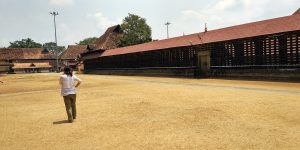
The Shiva temple at Vaikom. (KA Shaji/South First)
“The untouchability issue in Vaikom was not an internal Hindu problem, and there was no rationale behind Gandhi’s preventing non-Hindus from joining it. Gandhi wanted upper-caste Hindus at the forefront of the agitation to win over the compassion of orthodoxy,” pointed out TT Sreekumar, an academic and researcher
“But that, in effect, marginalised the backward castes which found inspiration in Periyar and leaders like TK Madhavan,” Sreekumar told South First.
Little wonder that Periyar described the way the agitation ended as the “Vaikom betrayal” — with practically no assurances from the authorities, and the Congress ending it as ordered by Gandhi.
Despite all its shortcomings, the Vaikom agitation became historic mainly because of how Periyar led it from the front.
He visited nearby villages to mobilise volunteers. Through fiery speeches, he added a new dimension to the satyagraha, which till then was centred on apolitical rhetoric.
Eminent Tamil journalist V Kalyanasundaram termed him the “Vaikom Veerar”, or the Hero of Vaikom. Congress leaders in Kerala, including Kesava Menon and Kelappan, invited Periyar to the victory celebrations of the satyagraha and even requested him to preside over the first in a series of meetings.
Even upper caste leader Mannathu Padmanabhan used such a meeting to recall the sacrifices of Periyar and Nagammal in keeping the agitation alive when all the local leaders were in jail.
Gandhi, too, initially had confidence in Periyar’s organisational capacity. When leaders from Kerala sought Gandhi’s permission to convert the satyagraha into an all-India affair, he refused, saying that volunteers from Tamil Nadu were sufficient to keep it alive.
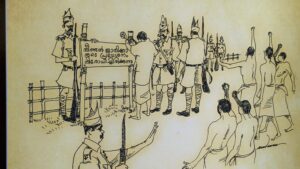
An artistic representation of the istallation of board preventing entry of untouchables in Vaikom temple premises. (Artist: Madanan)
The then British Resident said in his report to the then government of Madras Presidency: “The movement must have collapsed long ago if it had not received support from outside Travancore…”
On his release from Aroor jail after the first imprisonment, Periyar went to Vaikom rather than to his hometown of Erode, much to the chagrin of the district magistrate, who rebuked the police superintendent for this.
Periyar showed no sign of slackening, so he was arrested 27 days later. This time Periyar was sentenced to four months rigorous imprisonment, and he was sent to the central jail in Thiruvananthapuram.
While his fellow satyagrahis enjoyed the status of political prisoners, Periyar was denied the same. Perturbed by this, Rajaji wrote in a newspaper article that Periyar was deprived of everything satyagraha prisoners were entitled to. He condemned the rigorous imprisonment and the jail clothing.
Infuriated by the discriminatory treatment meted out to Periyar, his fellow prisoner Kesava Menon wrote to the princely state’s diwan, raising strong objections. But there was no response.
“As far as Vaikom agitation was concerned, Periyar was at the forefront of every aspect. From Tamil Nadu, he facilitated a contribution of ₹1,000. He took part in every consultative meeting, peace committee, and campaign party formed as part of the agitation,” noted the academic Sreekumar.
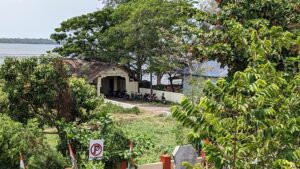
The boat jetty in Vaikom where Periyar arrived from Ernakulam to take part in the Satyagraha. (KA Shaji/South First)
“He was also a part of the eight-member delegation that met the Travancore diwan with their demands. All the personalities who arrived in Vaikom met Periyar and shared their views. Prominent among them was Swami Shraddhananda of the Arya Samaj, .
“Periyar recalled that Gandhi had consulted him before his all-important meeting with Maharani Regent,” added Sreekumar.
In the case of Rajaji, he met Periyar in prison in Arookutti before travelling to Vaikom. During his visit, Gandhi too consulted him on the future of the agitation.
The police records reveal that Periyar was also present in the closed-door meeting of Gandhi and Sree Narayana Guru.
After Vaikom, Periyar continued similar agitations in Nedunganda and Nagercoil. He was arrested again as soon as he returned to his native Erode. This time it was by the British Indian police accusing him of making a seditious speech. In reality, that was but a ploy to keep him away from Vaikom.
After the Vaikom Satyagraha, Periyar also further cemented his atheist principles and echoed Ambedkar’s thought that temple entry was a mere eyewash offered by Congress to the Dalits and other untouchables.
Like Ambedkar, he advocated for better education, better jobs, and high social positions for the backward people, rather than mere temple entry. He also took a stand that there would not be any more focus on god, religion, and the Vedas.
Addressing a meeting in Kerala’s Thrissur in 1936 along with his old Congress colleague and friend Kelappan, Periyar said there was no point in continuing with the agitations for temple entry as there were many other serious issues to address.
He also said the temple entry agitation was, in fact, a ploy of caste Hindus to claim magnanimity at a later stage.

Apr 23, 2024

Apr 23, 2024

Apr 23, 2024

Apr 23, 2024

Apr 23, 2024